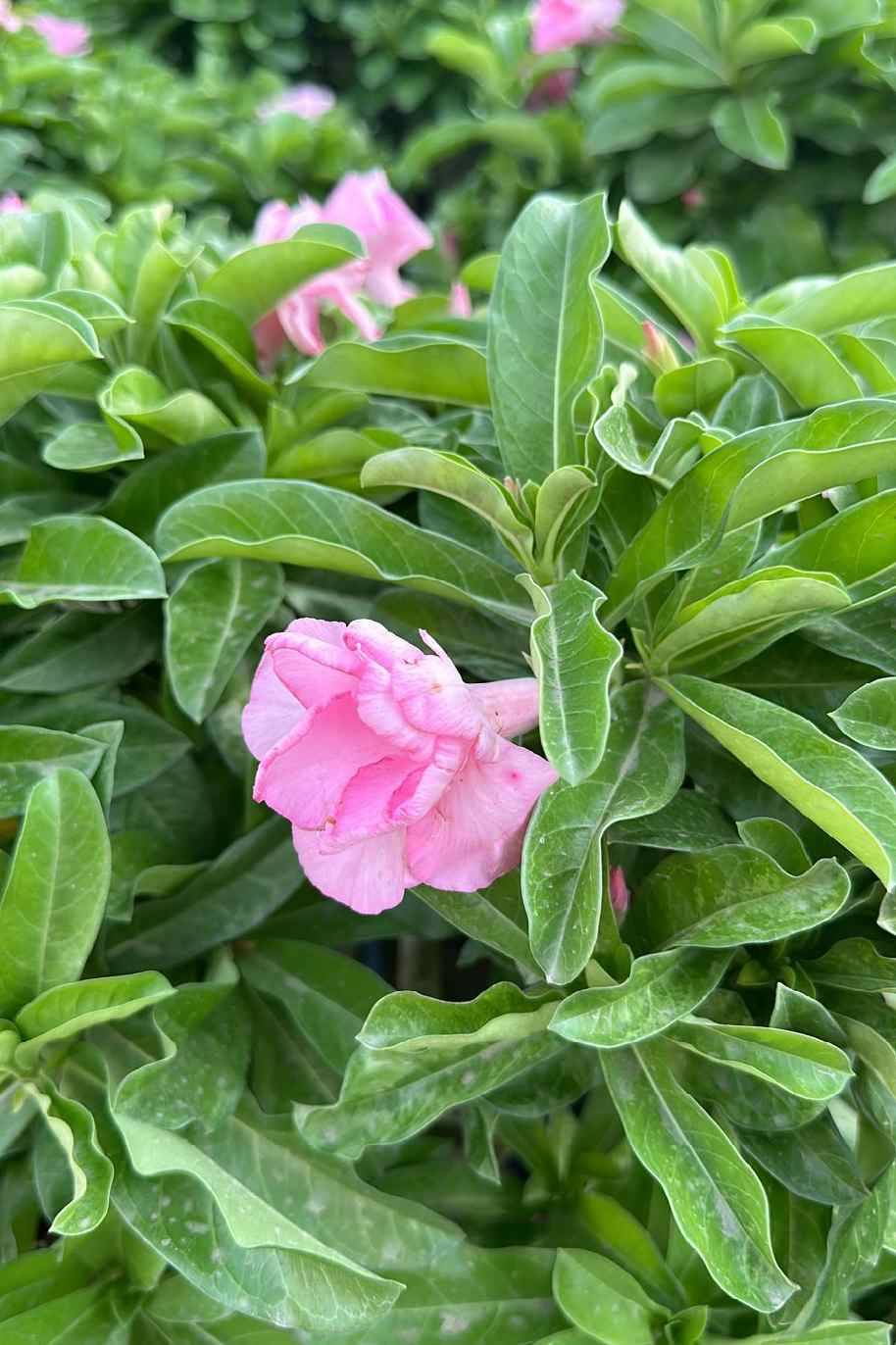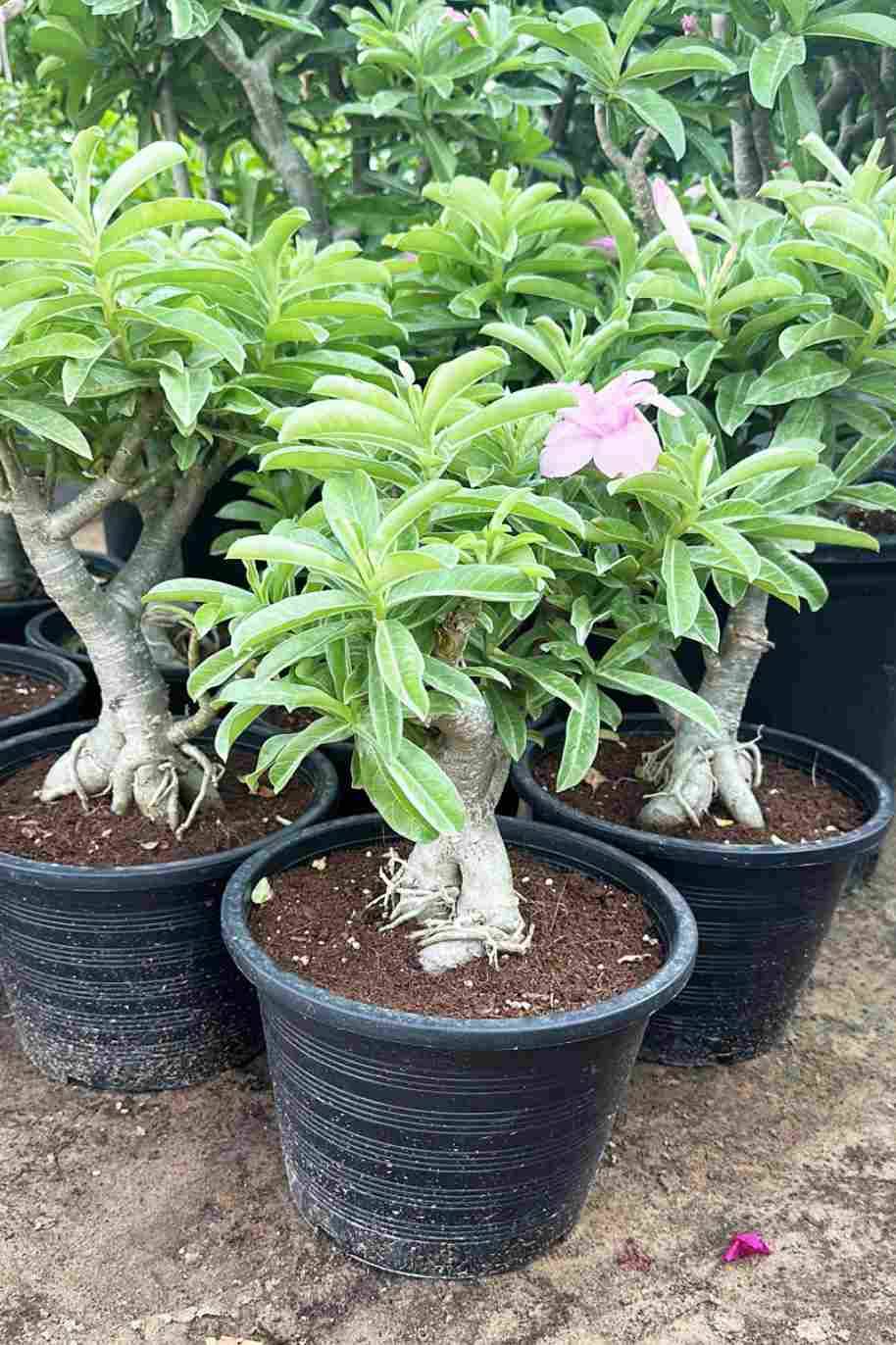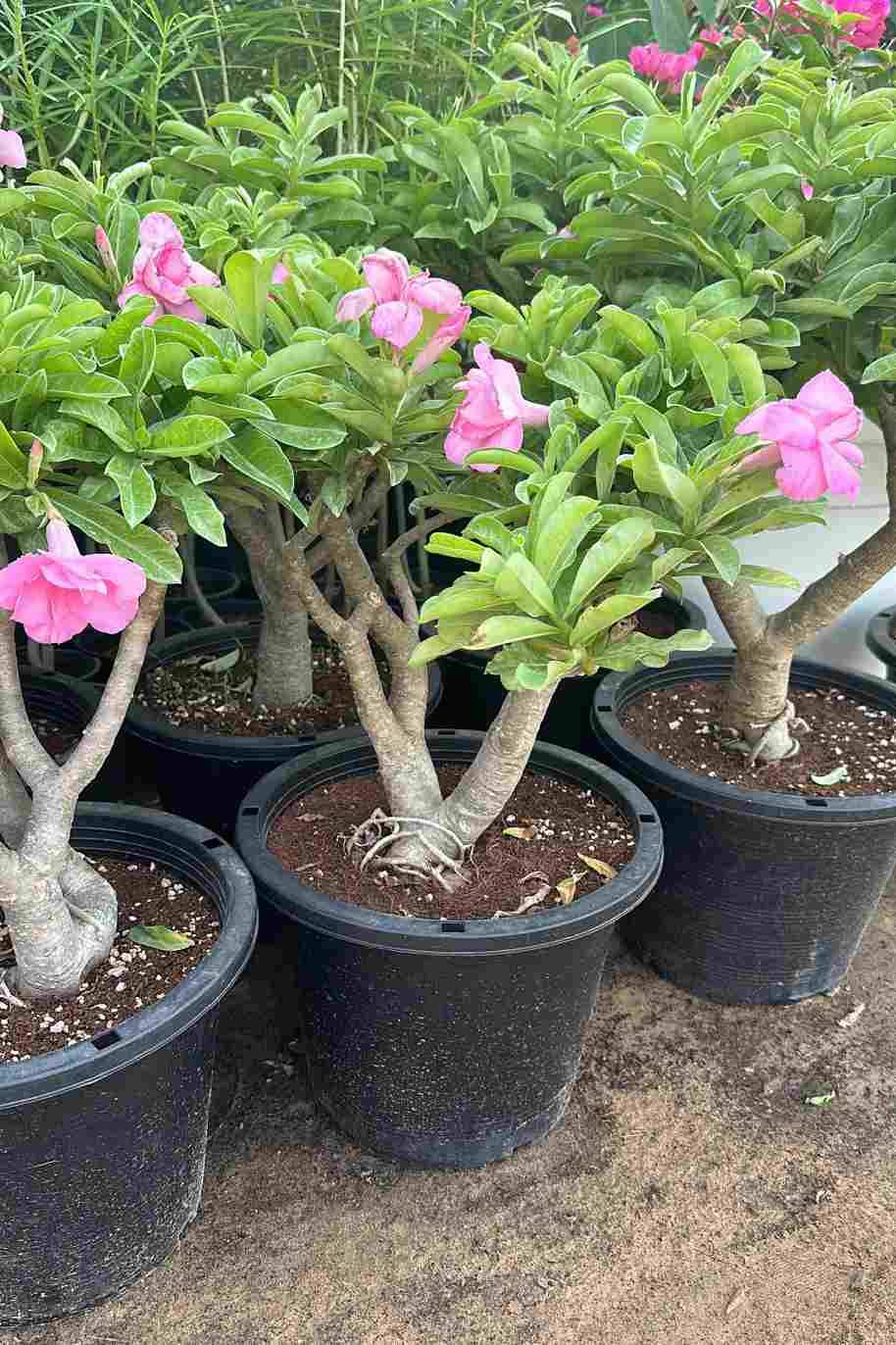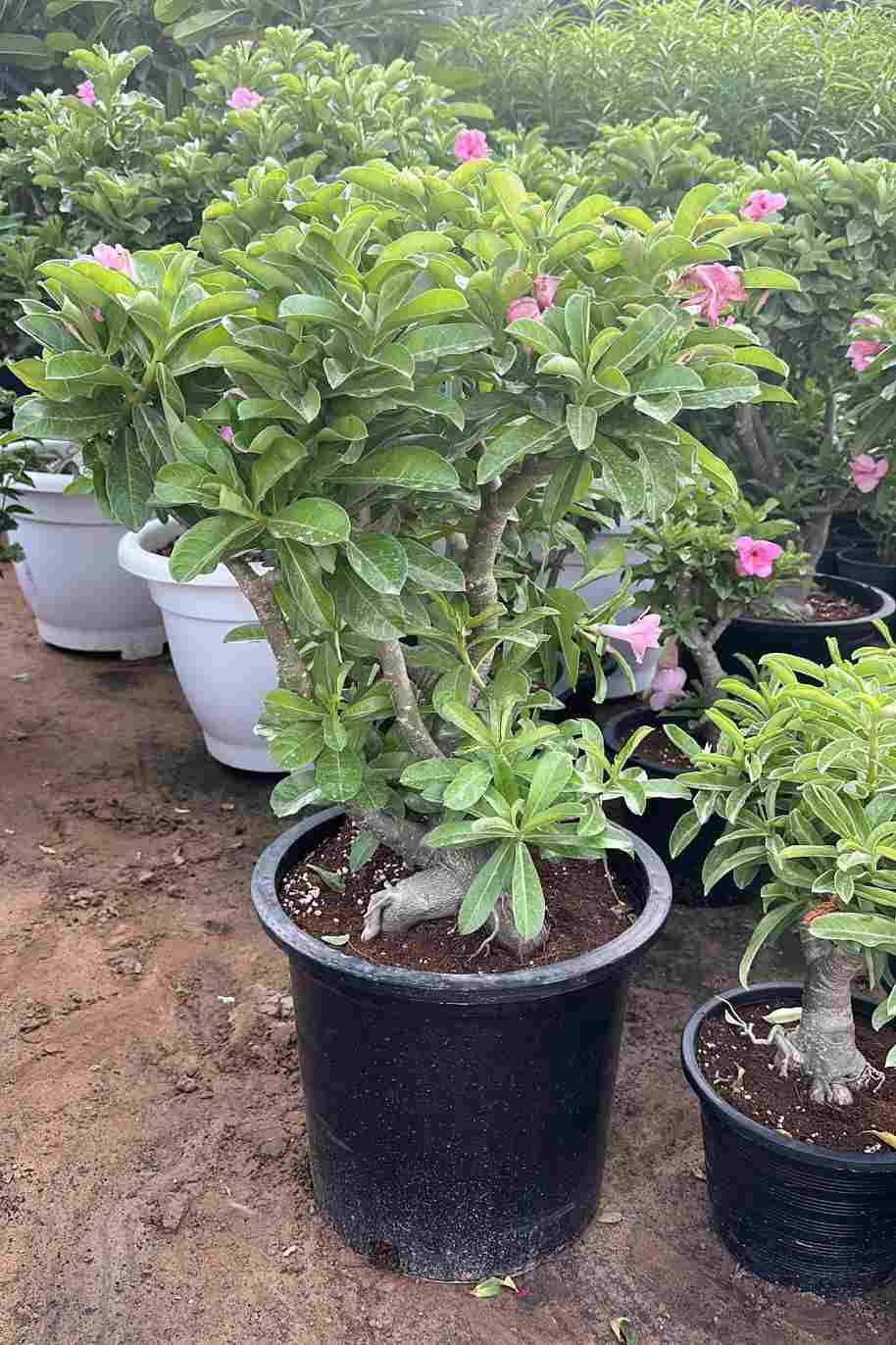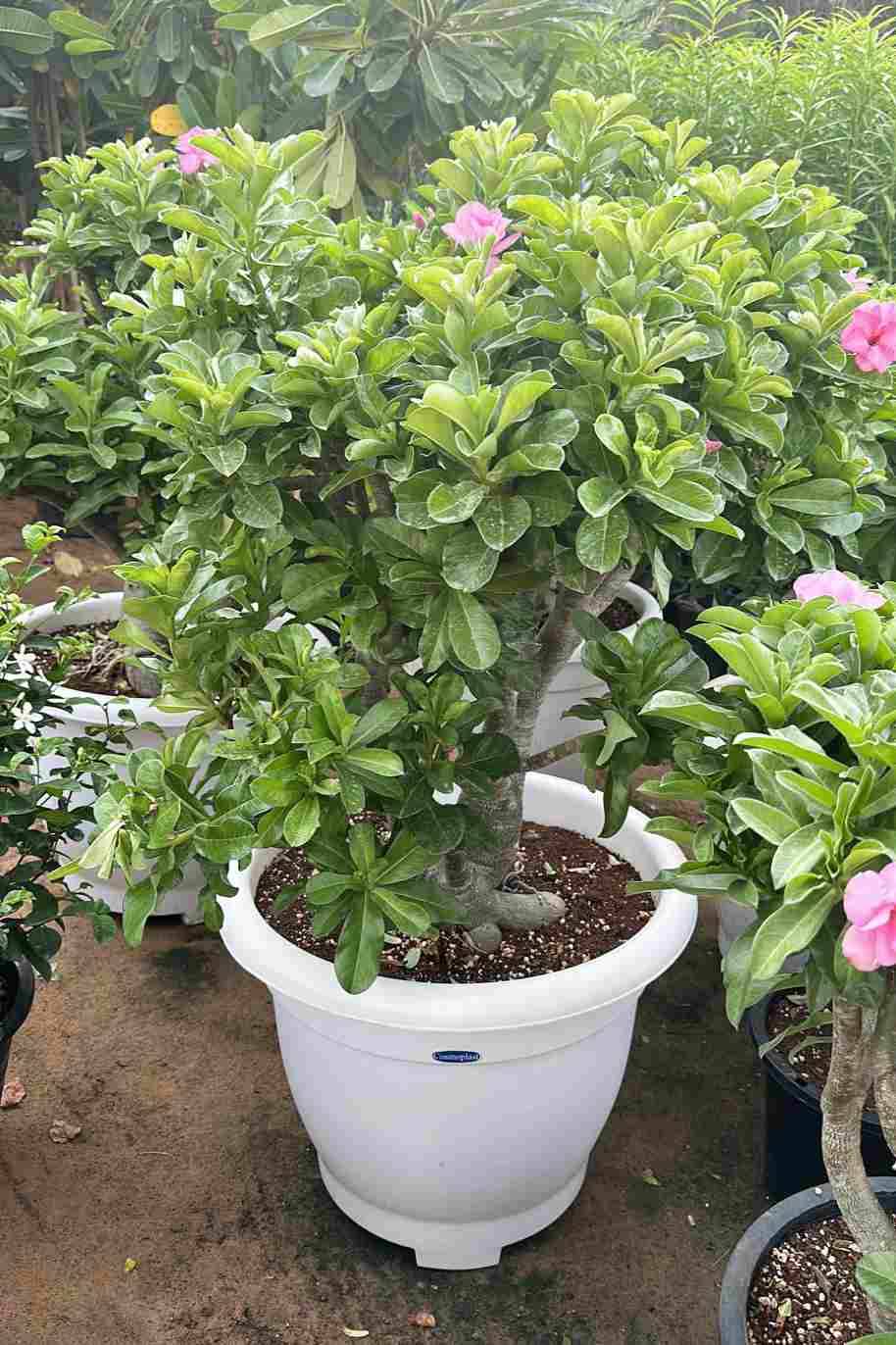Plant Bio
Desert Rose (Adenium obesum), commonly known for its vibrant and showy flowers, is a succulent plant native to arid regions of Africa and the Arabian Peninsula. The "Pink" variety, as the name suggests, features beautiful pink flowers. Here's a description and care guide for Desert Rose Pink:
Description:
Flowers: The standout feature of the Desert Rose Pink is its striking pink or rosy-red flowers. These trumpet-shaped flowers have five distinct petals and are borne in clusters. They appear throughout the warmer months, typically in spring and summer.
Leaves: The leaves are thick and glossy, and they tend to grow in clusters at the ends of the branches. The foliage varies in color from light green to dark green, depending on the cultivar.
Trunk: The plant often develops a thick and swollen base or caudex, which stores water during dry periods. The caudex can be sculptural and adds to the plant's appeal.
Growth Habit: Desert Rose typically grows as a small shrub or a small tree, reaching a height of 2 to 6 feet (0.6 to 1.8 meters) when cultivated in pots or containers. It has a bushy, branching growth habit.
Care:
Sunlight: Desert Roses thrive in full sun. They require at least 6 to 8 hours of direct sunlight daily to produce healthy growth and abundant flowering.
Climate: These plants are well-suited to warm and tropical climates. They are sensitive to frost and should be protected from temperatures below 40°F (4°C). They can be grown outdoors in USDA hardiness zones 10 and above.
Soil: Use well-draining soil with a slightly acidic to neutral pH. A cactus or succulent mix combined with some perlite or sand is suitable. Good drainage is essential to prevent root rot.
Watering: Desert Roses prefer to dry out between waterings. Water thoroughly when the top inch (2.5 cm) of soil feels dry. Reduce watering during the dormant season in winter.
Fertilization: Feed your Desert Rose with a balanced, water-soluble fertilizer during the growing season (spring and summer). Dilute the fertilizer to half the recommended strength and apply every 4 to 6 weeks.
Pruning: Prune your Desert Rose as needed to shape its growth, remove dead or diseased branches, and encourage branching. Pruning can also help control the size and shape of the plant.
Repotting: Repot your Desert Rose every 2 to 3 years or when it outgrows its container. Choose a pot that is slightly larger than the current one, and refresh the soil mix.
Pests and Diseases: Desert Roses can be susceptible to aphids, mealybugs, and spider mites. Regularly inspect the plant for signs of infestation and treat promptly. Avoid overwatering to prevent root rot.
Dormancy: In cooler climates or during the winter months, Desert Roses may go into dormancy and shed their leaves





